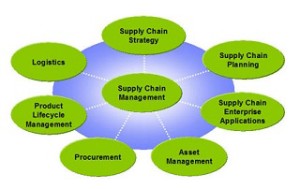From Guest Blogger Lana Hawkins: Four Steps to Bring Sustainability to Your Supply Chain

Mapping the supply chain
An increased efficiency is a great way to cut down the costs, but this is a mission impossible without the proper evaluation process. Therefore, business owners and managers must set up the framework for measuring and accessing their operations. This is made possible by a carbon footprint analysis, which provides insights into the way that tools and equipment affect the environment.
Bear in mind that there is a wide array of factors to monitor here, and that one must grasp the communications, metrics, procedures and employee and executive training. The Greenhouse Gas Protocol is the most prominent and widely-adopted international tool for keeping track of the environmental impact and managing the emissions. This should lead to the boosted capacities of producing reports and complying with the essential standards.
Optimal performance
The initial phase of analysis allows companies to proceed to the next stage of redesigning and optimizing the supply chain. Organizations that lack the expertise and experience in the field should not hesitate to partner up with the third-party providers. Managing supply chain with the sustainability in mind means that you must figure out how to implement various complex measures.
The changes can be made in the areas of pallet racking, transportation design, organization, information technology, inventory storing, reducing wasteful materials during packaging, etc. It might be a good idea to co-locate the operations that add value in one place, especially if they are tied to the logistic area.
The green edge
One of the main things to muse on is the utilization of recyclable materials in the supply chain. Furthermore, businessmen should strive to integrate the energy-efficient technology thought the warehouses and offices. Think in terms of electricity-saving LED lighting, occupancy sensors that detect the flow of movement, recycling programs, as well as green spaces.
Try to include the suppliers in your sustainability strategy by communicating your expectations, and defining the supplier code of conduct. All these innovations help companies shape a positive public image, save a considerable amount of money, use resources more efficiently and gain an edge in the market.
Going an extra mile
You should make an effort to think beyond supply chain organization and measurement. Endorse a holistic approach and help your customers embrace green practices as well. This can take the form of reverse logistics operations: End-of-life product disposal, extensive recycling, or refurbishment. It may not seem like a significant contribution, but these steps will take you a long way in bringing down the total carbon footprint.
What is more, you can opt for transportation means that involve less carbon emissions (ocean modes or rail), or invest in hybrid and natural gas vehicles. Also, it is high time to go paperless when dealing with invoices and billing. Finally, muse on assembling a warehouse or a distribution point, which could take the aforementioned efficiencies to the next level.
Winds of change
Today, we have a broad range of cutting-edge green technologies at our disposal, and the green bar is rising when it comes to regulation and industry standards. The first step is to evaluate the supply chain practices and find more room for environment-friendly solutions to take hold. They should be used in synergy in order to bring forth a positive, green change. In the 2016 and beyond, we expect to see these standards playing an ever more defining role in the supply chain.
